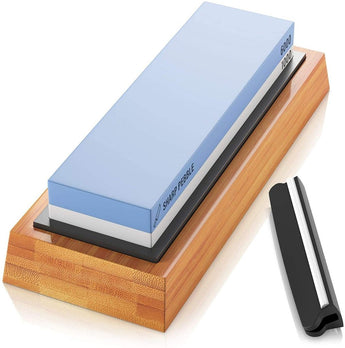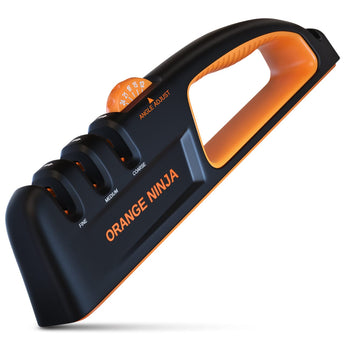
Ideally, you would want a knife that does everything from crushing a carcass to deveining a shrimp. Although, theoretically you could keep on persisting with a single blade for all your kitchen tasks but that isn’t such a good idea. To start off, it’s not always easy to get the job done and secondly, even if you somehow figure out a way of using your chef’s knife; it’ll take a lot longer to get the job done.
If you try to jam an axe where a chisel would do, the results aren’t going to be pretty. More importantly, using the wrong blade makes you susceptible to a nasty injury. Today, we’ll discuss a few key knives your knife block should have.
Chef’s knife: It is by far the most important tool in your kitchen. Ideally, you should look for a knife that has a blade length of about 8-10 inches. One, it makes your workflow more efficient and a larger blade also makes it easy to handle and safer.
A good chef’s knife will be your daily workhorse taking on the bulk of cutting and chopping tasks from dicing vegetable to taking apart a turkey. It will also be the most expensive of all your knives. But it doesn’t mean you have to shell out $1000 on a bespoke knife for your very first chef’s knife. There are plenty of options available that aren’t heavy on your wallet and will last for years with proper care.
Paring knife: is another trusty sidekick that will make your job easier and enjoyable. If you are working with food that requires taking care of finer details then a good paring knife is what you need. There are certain tasks that a hefty chef’s knife may find tricky to do neatly such as finely mincing garlic or removing fruit and vegetable skin. A paring knife will help you get these tasks done quickly and neatly.
However be careful not to use it under a lot of stress. Since the blade is thin, the pressure will damage it. It’s best to use the chef’s knife for hard fruit and vegetables. You should be able to find a decent paring knife between $20 and $30.
Boning knife: A boning knife has a medium length blade about 4-5 inches long. It will make your life a lot easier when it comes to filleting fish or neatly separating meat from bone or joint. The blade’s flexibility allows the knife to move quickly around tight corners minimizing waste and increasing efficiency.
Serrated knife: Also known as the bread knife; a serrated knife can do a lot more than just slicing loaves. Usually, a chef’s knife because of its flat surface finds it difficult to work with slippery foods such as tomatoes, melons or cutting cakes. Whereas, a serrated blade does a much better job because serrations provide friction, which facilitates a controlled incision.
We’d love to hear from you! Drop us a PM on our Facebook or Instagram. For more useful tidbits on knife-care be sure to visit our blog.
Here’s to sharp knives and great food!
Team Sharp Pebble




I believe a combination of chef’s knife and serrated knife is perfect for all types of jobs. But I always keep in mind about a perfect sharpening stone since without it no knife can survive for a while. I love sharp pebble’s sharpening stones so much that I have chosen them as best sharpening tool in my https://justmachete.com/best-sharpening-stones/ article. Keep up the good work.